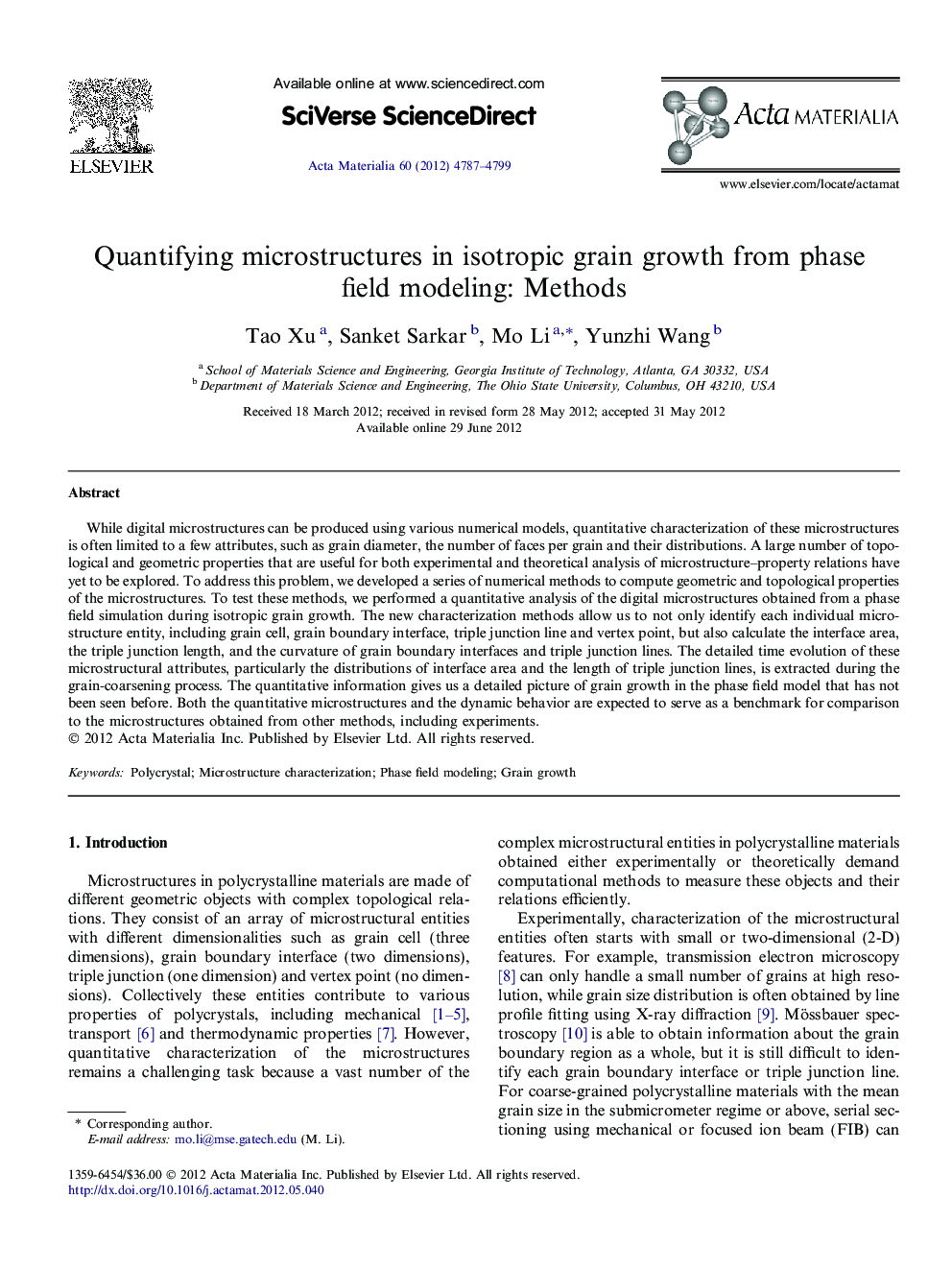| Article ID | Journal | Published Year | Pages | File Type |
|---|---|---|---|---|
| 1446934 | Acta Materialia | 2012 | 13 Pages |
While digital microstructures can be produced using various numerical models, quantitative characterization of these microstructures is often limited to a few attributes, such as grain diameter, the number of faces per grain and their distributions. A large number of topological and geometric properties that are useful for both experimental and theoretical analysis of microstructure–property relations have yet to be explored. To address this problem, we developed a series of numerical methods to compute geometric and topological properties of the microstructures. To test these methods, we performed a quantitative analysis of the digital microstructures obtained from a phase field simulation during isotropic grain growth. The new characterization methods allow us to not only identify each individual microstructure entity, including grain cell, grain boundary interface, triple junction line and vertex point, but also calculate the interface area, the triple junction length, and the curvature of grain boundary interfaces and triple junction lines. The detailed time evolution of these microstructural attributes, particularly the distributions of interface area and the length of triple junction lines, is extracted during the grain-coarsening process. The quantitative information gives us a detailed picture of grain growth in the phase field model that has not been seen before. Both the quantitative microstructures and the dynamic behavior are expected to serve as a benchmark for comparison to the microstructures obtained from other methods, including experiments.
